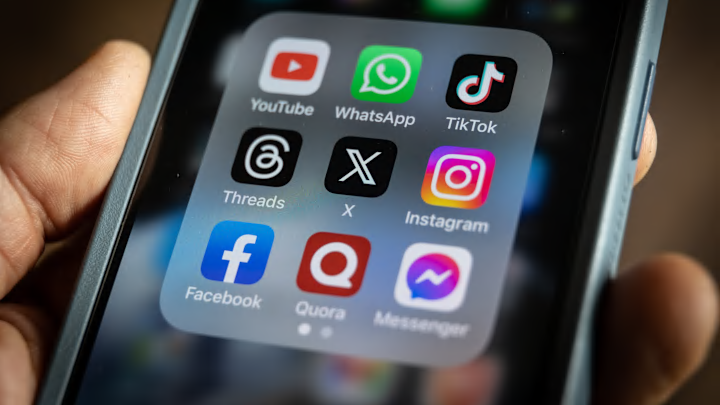Scrolling Ourselves Silly: The Beautiful, Bizarre Grip of Social Media

We wake up, roll over, and reach for our phones. Before we even brush our teeth, we’re deep into someone else’s vacation, someone else’s crisis, someone else’s dog wearing sunglasses. Social media has become our first greeting and our final lullaby. It’s where we laugh, connect, compare, spiral, stalk, and sometimes—just maybe—learn something meaningful.
But what’s wild isn’t that social media is so powerful. It’s that we know it messes with us, and yet we keep showing up for it like a moth to a beautifully filtered flame.
The New Town Square (with Filters)
At its best, social media is a miracle. It gives voice to the unheard. It starts movements. It makes us laugh in the middle of horrible days. It helps us find lost friends, new communities, and niche obsessions (hello, frog pottery TikTok). It collapses geography and opens up a shared space where everyone, technically, has a mic.
But this digital town square comes with a twist—it’s curated. Heavily. The real is mixed with the performative, and most of us aren’t sure where one ends and the other begins. That beach selfie? It might have taken 57 takes, 4 filters, and a minor existential crisis to post. But to the viewer, it’s just “#blessed.”
The Scroll and the Spiral
You open the app with innocent intentions. Just a quick check. A dopamine snack. Five minutes later, you’ve watched a hairless cat get a bath, read five hot takes on something you didn’t know existed, and now feel slightly bad about your lunch. Time warps. Reality bends.
Social media is designed that way. Infinite scroll. Push notifications. Algorithms built not just to give you what you want—but to keep you guessing, keep you scrolling. It’s not a flaw in your willpower. It’s a feature.
And while we may mock the doomscroll, we’re also weirdly comforted by it. It gives us a sense of control. A feeling that we’re “keeping up.” Even if that means overstimulating our brains until they feel like scrambled eggs.
The Identity Jigsaw
Social media also forces us into strange versions of ourselves. Not fake, necessarily—but edited. We show our highlights, crop out the mess, and brand our personalities like personal marketing managers. This isn’t necessarily bad—it’s human to want to be seen in a certain light. But the longer we play the part, the harder it is to know where the act ends and the real us begins.
Who are we when we’re not being witnessed? What parts of ourselves are we saving for off-screen life—if that still exists?
Why We Can’t Quit (Even When We Want To)
Most of us have considered deleting it all. Some even do—for a week, a month, a victorious digital detox. But like exes with good playlists, social media always finds a way back into our lives.
Because here’s the truth: we want to be seen. We like sharing. And we need connection, even if it comes wrapped in a filter and a hashtag. Social media may be a flawed system, but it reflects a very real human desire—to belong, to express, to observe and be observed.
It’s not about quitting. It’s about figuring out how to be there without losing ourselves.
Living in the Feed Without Being Fed to It
So how do we make peace with it? Maybe we learn to scroll slower. Post less performatively. Mute the accounts that make us feel like garbage and follow the ones that remind us to breathe. Maybe we remember that likes aren’t love and that validation doesn’t live in pixels.
Or maybe we just log off now and then—not because we’re trying to prove something, but because we’re tired. Because real life, as chaotic and unfiltered as it is, still exists beyond the screen.
Social media is the loudest room we’ve ever entered. But we don’t always have to shout. Sometimes, just observing quietly—and leaving when we’ve had enough—is a revolutionary act in itself.